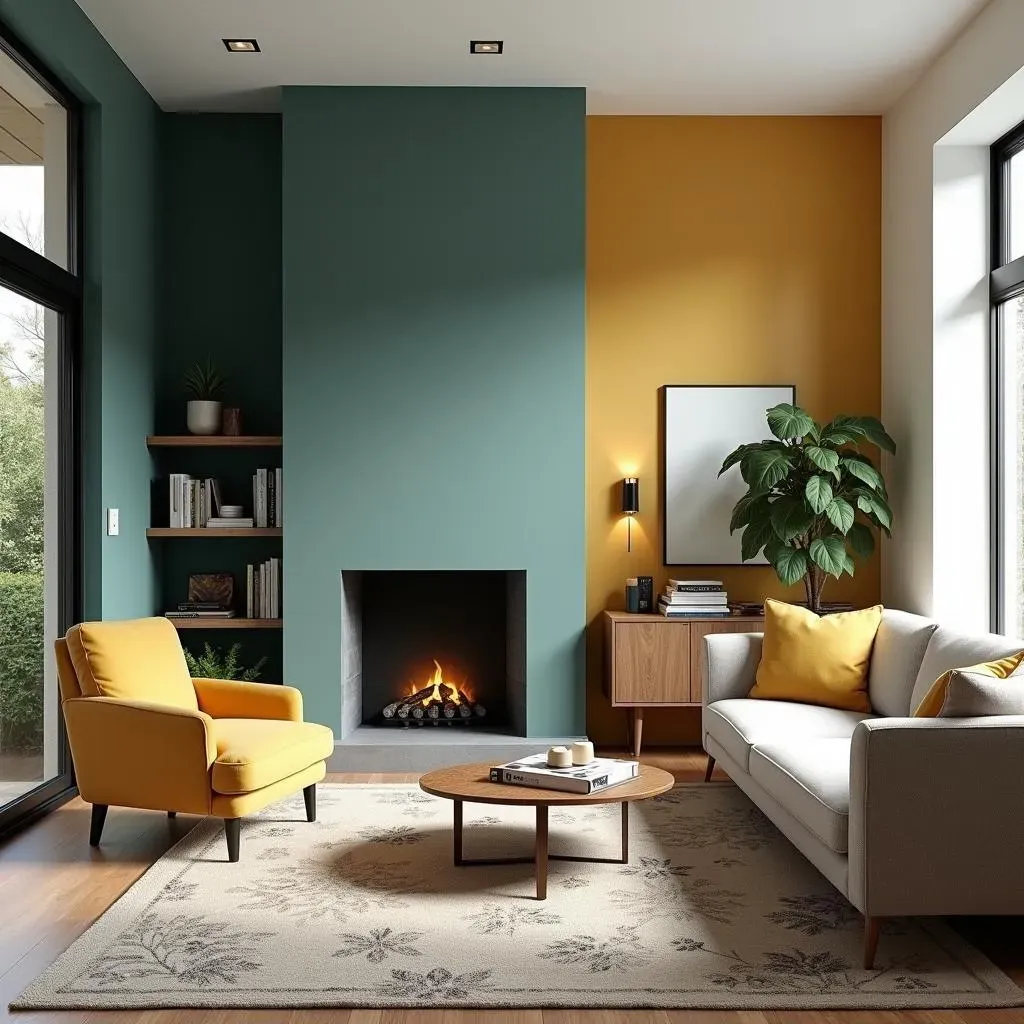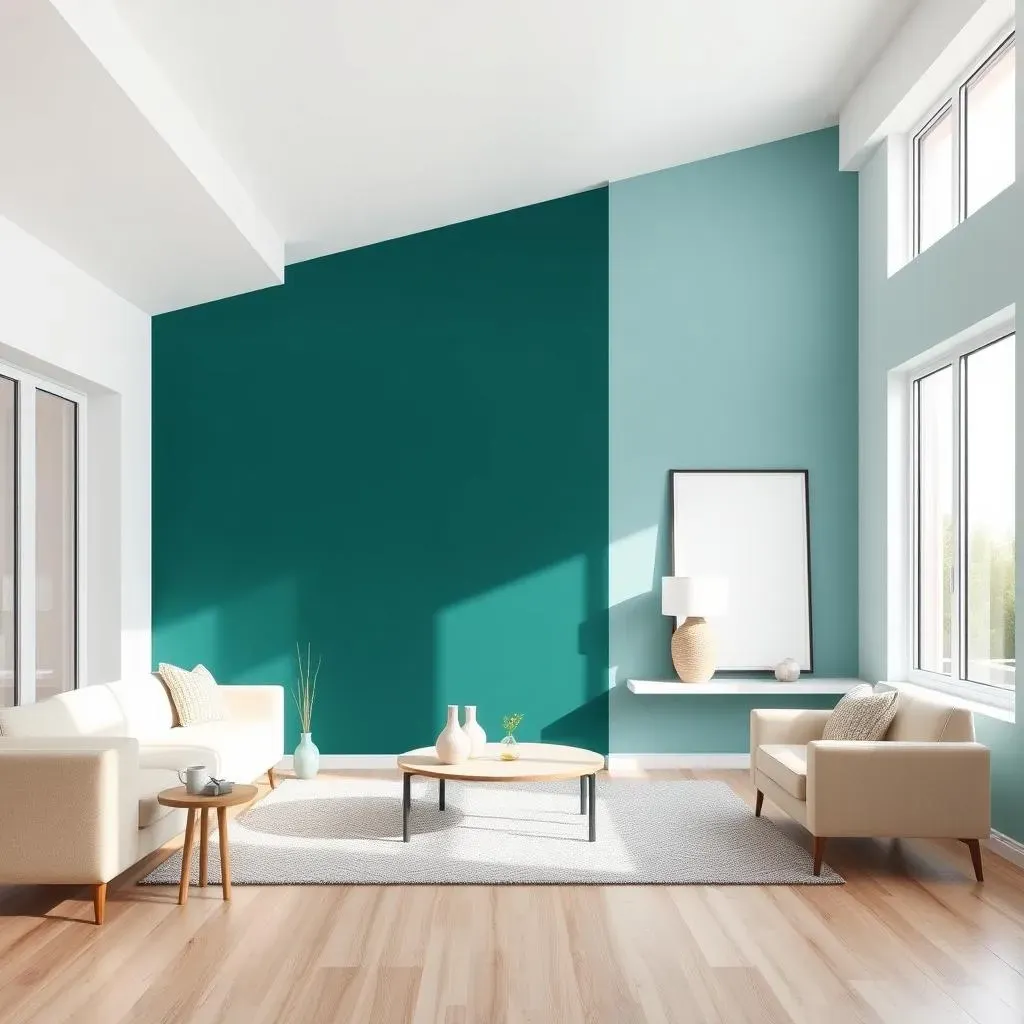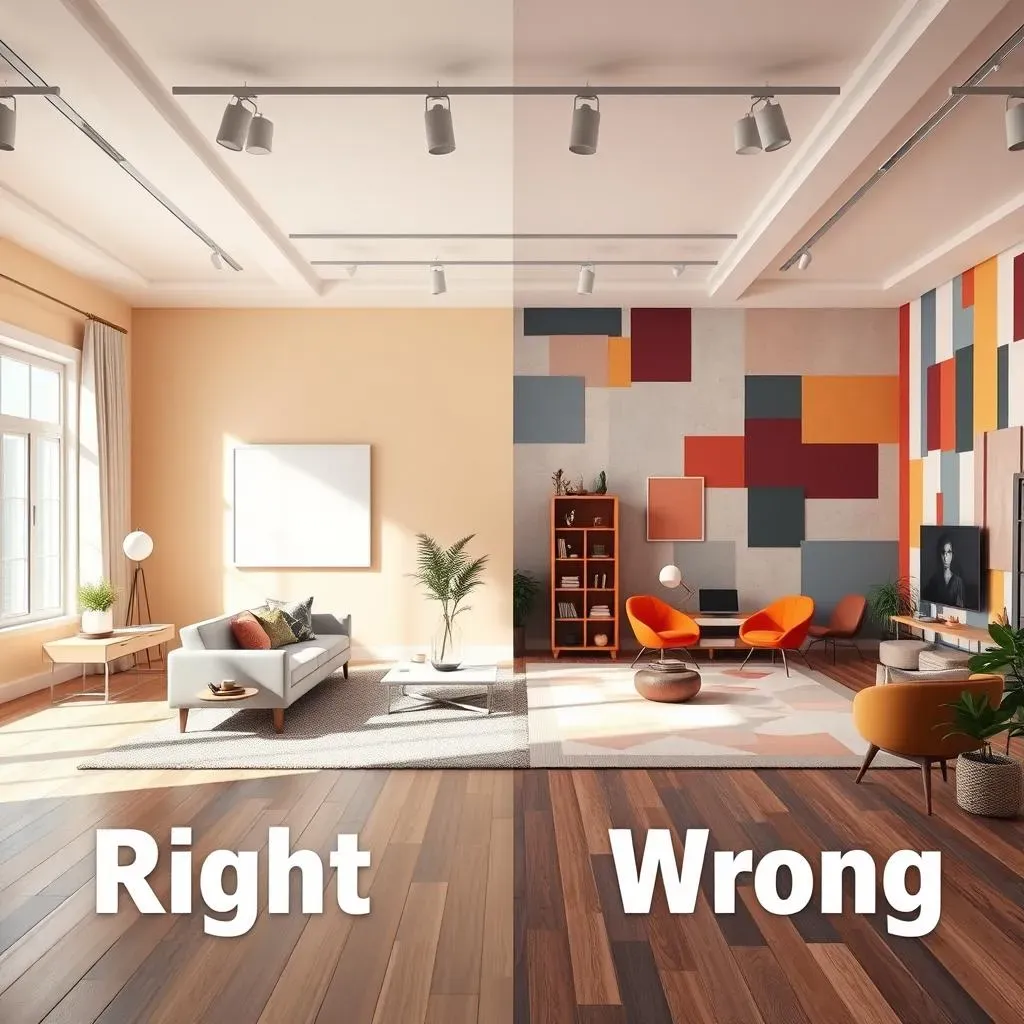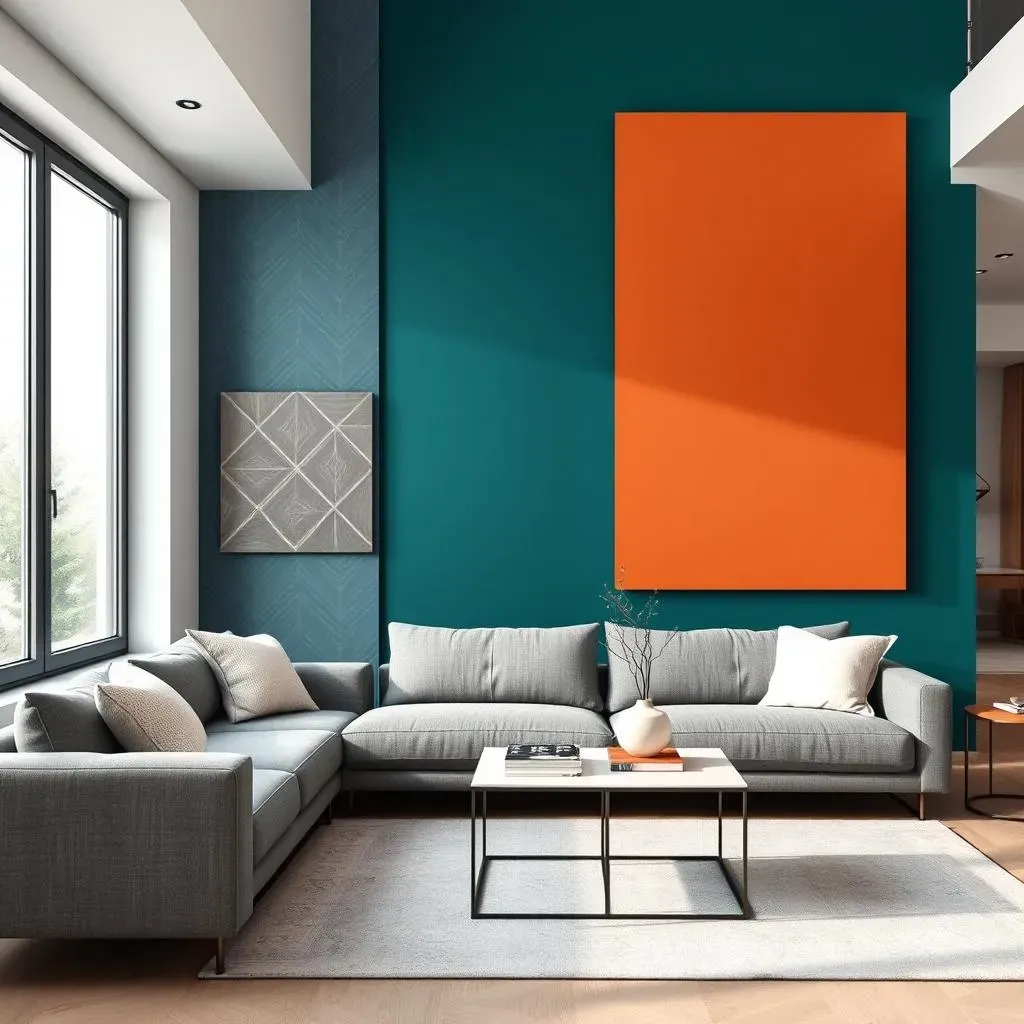Table of Contents
Thinking about shaking up your space? Forget one accent wall – let's talk about two! Using 2 accent walls in a room might sound like a bold move, but when done right, it can completely transform your space. It's about more than just slapping on some paint; it's about creating depth, highlighting architectural features, and expressing your unique style. Are you wondering if this design trick is right for you? Maybe you're picturing a disaster instead of a design statement? Don't worry, we've all been there.
Why Choose 2 Accent Walls in a Room? Exploring the Design Potential

Why Choose 2 Accent Walls in a Room? Exploring the Design Potential
let's get real about why choose 2 accent walls in a room. It's not just about following a trend; it's about unlocking a room's hidden potential. Think of it as turning up the volume on your design. One accent wall is cool, but two? That's a statement. It's a way to inject personality, create visual interest, and define different zones within a single space. It's like saying, "Hey, this room has layers, and I'm not afraid to show them off."
But it's not just about aesthetics. Two accent walls can actually solve design problems. Got a long, narrow room? Accent walls on the shorter ends can visually shorten and widen the space. Want to highlight a specific area, like a reading nook or a home office corner? Accent walls can do the trick. Plus, it's a fantastic way to play with color and texture, adding depth and dimension that a single accent wall simply can't achieve. It's about creating a dynamic and engaging environment, not just a pretty picture.
Benefit | Description |
|---|---|
Enhanced Visual Interest | Creates a more dynamic and engaging space compared to a single accent wall. |
Space Definition | Helps to visually separate and define different zones within a room. |
Architectural Emphasis | Highlights specific architectural features or areas of interest. |
Problem Solving | Can correct awkward room proportions, like making a long room appear wider. |
For example, I once helped a friend transform her awkwardly shaped living room with two accent walls. One wall highlighted the fireplace, creating a cozy focal point, while the other defined the seating area, making it feel more intimate and inviting. The result? A room that felt balanced, stylish, and uniquely "her." It's about making your space work for you, not the other way around.
Planning Your Dual Accent Wall Design: Color, Placement, and Balance in a Room

Planning Your Dual Accent Wall Design: Color, Placement, and Balance in a Room
Color Harmony: Choosing the Right Palette for Your 2 Accent Walls
so you're ready to commit to two accent walls. Awesome! But before you grab those paintbrushes, let's talk color. This isn't just about picking your favorite hues; it's about creating a harmonious palette that elevates the entire room. Think about the existing colors in your space – furniture, flooring, décor – and how your accent walls will complement them. Do you want a bold contrast or a subtle blend? That's the first question to ask yourself.
One approach is to choose two shades from the same color family, perhaps a deep teal and a lighter aqua. This creates a cohesive and calming feel. Another option is to go for complementary colors, like blue and orange, for a more vibrant and energetic look. Just be careful not to overwhelm the space; balance is key. And don't forget to consider the undertones of your colors. A warm gray and a cool gray, for example, might clash despite being in the same color family. Trust your eye, and always test paint samples in your room before committing.
Placement Perfection: Where to Put Your Accent Walls for Maximum Impact
Placement is just as crucial as color when it comes to planning your dual accent wall design. It's not about randomly picking two walls; it's about strategically placing them to enhance the room's architecture and create visual interest. Consider the natural light in your space. A dark accent wall opposite a window can absorb light and make the room feel smaller, while a lighter shade can reflect light and brighten the space.
Think about the focal points of your room. Do you want to highlight a fireplace, a gallery wall, or a stunning view? Accent walls can draw attention to these areas. Also, consider the shape of your room. In a long, narrow room, painting the shorter walls as accent walls can make the room feel wider and more balanced. Avoid painting adjacent walls as accent walls, as this can create a disjointed and overwhelming effect.
Placement Consideration | Impact |
|---|---|
Natural Light | Affects how the color appears and the overall brightness of the room. |
Focal Points | Draws attention to specific areas or features in the room. |
Room Shape | Can visually alter the proportions of the room. |
Wall Adjacency | Avoid painting adjacent walls as accent walls to prevent a disjointed look. |
Achieving Visual Harmony: Balancing Color and Placement for a Stunning Result
Ultimately, successful dual accent wall design hinges on achieving visual harmony. It's about balancing the color intensity, the placement of the walls, and the overall décor of the room to create a cohesive and pleasing aesthetic. Think about the visual weight of your colors. A dark, bold color will draw more attention than a light, neutral shade. If you're using two contrasting colors, consider balancing them by using the bolder color on a smaller wall or in a less prominent area.
Pay attention to the furniture and accessories in your room. Do they complement the accent walls, or do they clash? Use neutral furniture and accessories to balance bold accent walls, or choose pieces that echo the colors in your accent walls for a more coordinated look. And don't be afraid to experiment! Try different combinations of colors and placements until you find what works best for your space. The goal is to create a room that feels balanced, stylish, and uniquely you.
DIY Guide: Painting 2 Accent Walls for Maximum Impact in Your Room

DIY Guide: Painting 2 Accent Walls for Maximum Impact in Your Room
Prep Like a Pro: Setting the Stage for Painting Success
Alright, you've got your colors, you've mapped out your placement – now it's time to get down to the nitty-gritty: prepping your space! Seriously, don't skip this step. A little prep work goes a long way in achieving a professional-looking finish. Start by clearing the room as much as possible. Move furniture to the center, cover it with drop cloths, and remove any wall décor. Next, grab your painter's tape and carefully tape off all trim, windows, doors, and anything else you don't want to get paint on. Press the tape firmly to create a tight seal.
Now, inspect your walls. Fill any holes or cracks with spackle, let it dry, and sand it smooth. Clean the walls with a damp cloth to remove any dust or dirt. If your walls are glossy, lightly sand them to create a better surface for the paint to adhere to. Finally, apply a coat of primer to your accent walls. Primer helps the paint adhere better, provides a uniform surface, and can even help you achieve a more vibrant color. Let the primer dry completely before moving on to the next step. Trust me, taking the time to prep properly will save you headaches (and paint splatters) down the road.
Paint Like an Artist: Techniques for Flawless Accent Walls
the stage is set, and it's time to unleash your inner artist! Start by stirring your paint thoroughly. Then, using a high-quality brush, "cut in" along the edges of your accent walls – that means painting a neat line where the wall meets the trim, ceiling, or adjacent walls. This creates a clean, professional look. Next, grab your roller and load it up with paint. Roll the paint onto the wall in a "W" pattern, overlapping each stroke slightly. This helps to ensure even coverage and prevents streaks.
Work in manageable sections, and keep a wet edge to avoid lap marks. If you're using multiple coats, let the first coat dry completely before applying the second. Once the second coat is dry, carefully remove the painter's tape. Score the edge of the tape with a utility knife before pulling it off to prevent the paint from peeling. Step back and admire your handiwork! With a little patience and attention to detail, you can achieve accent walls that look like they were painted by a pro.
Painting Step | Technique | Tip |
|---|---|---|
Cutting In | Use a high-quality brush to paint a neat line along edges. | Apply steady pressure for a clean, even line. |
Rolling | Roll paint onto the wall in a "W" pattern. | Overlap each stroke slightly to ensure even coverage. |
Multiple Coats | Let the first coat dry completely before applying the second. | Follow the paint manufacturer's drying time recommendations. |
Removing Tape | Score the edge of the tape with a utility knife before pulling it off. | Pull the tape off at a 45-degree angle. |
Common Mistakes to Avoid When Using 2 Accent Walls in a Room

Common Mistakes to Avoid When Using 2 Accent Walls in a Room
Alright, let's talk about the dark side of using 2 accent walls in a room – the mistakes that can turn your design dream into a decorating disaster. Trust me, I've seen it all, from clashing colors to awkward placements that make a room feel totally off-kilter. One of the biggest mistakes is simply not planning. People get excited and just start slapping paint on walls without considering the overall effect. This can lead to a disjointed and unbalanced space. Remember, two accent walls require even more forethought than one!
Another common blunder is choosing colors that fight each other. Just because you love both lime green and hot pink doesn't mean they belong on adjacent walls. Opt for colors that complement each other or, at the very least, don't clash. Placement is also key. Avoid painting adjacent walls as accent walls, as this can make the room feel smaller and more closed-in. And don't forget about the existing décor in your room. Your accent walls should complement your furniture, flooring, and accessories, not compete with them. By avoiding these common mistakes, you can create a stunning and harmonious space that truly showcases your style.
Mistake | Consequence | Solution |
|---|---|---|
Lack of Planning | Disjointed and unbalanced space. | Carefully consider color, placement, and overall effect. |
Clashing Colors | Visually jarring and unpleasant aesthetic. | Choose complementary colors or shades from the same family. |
Poor Placement | Room feels smaller, closed-in, or awkward. | Avoid painting adjacent walls and consider room shape and light. |
Ignoring Existing Décor | Accent walls compete with furniture and accessories. | Choose colors and placements that complement existing elements. |
Double the Impact, Double the Style: Mastering Your 2 Accent Wall Design
So, you've journeyed through the world of double accent walls! Remember, using 2 accent walls in a room isn't just about following trends; it's about thoughtfully enhancing your space and reflecting your personality. By understanding the principles of color, balance, and placement, you can create a room that's both visually stunning and uniquely yours. Don't be afraid to experiment, trust your instincts, and most importantly, have fun with the process. With a little planning and a dash of creativity, your double accent walls will transform your room into a true design masterpiece.
